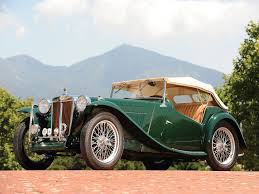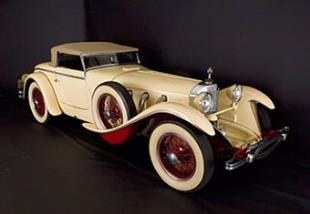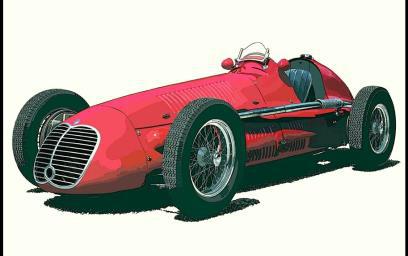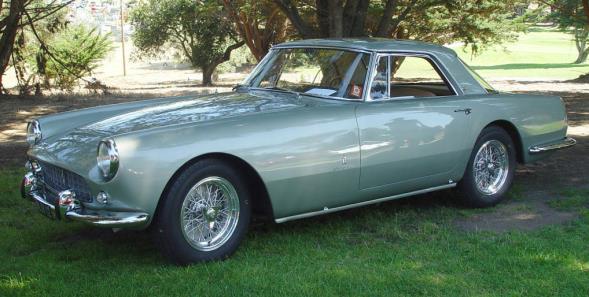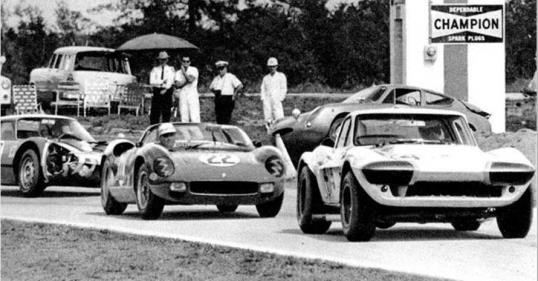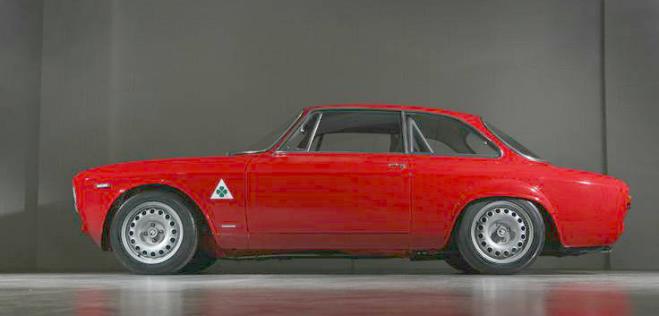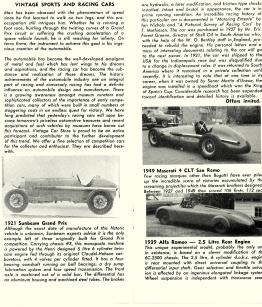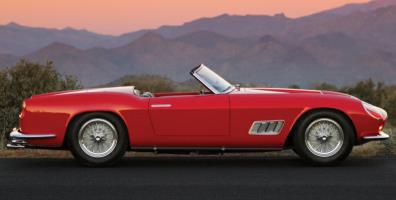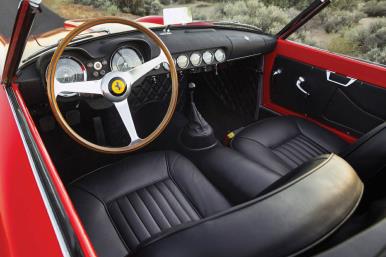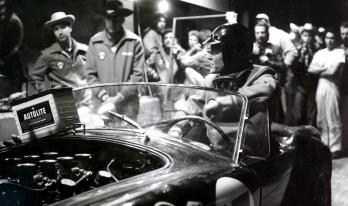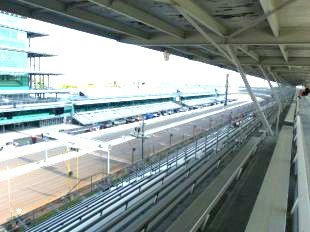200
A BRIEF ROMANCE WITH AN MG TC
Within a short period of time after firmly deciding that I was, in fact, going to join the European automobile trade, a Sunday New York Times yielded what appeared to me to be a superior MG TC, in British Racing green, with tan leather. The listing showed a Philadelphia telephone number!
And, by golly the same ad was in “The Philadelphia Inquirer” classifieds too! It was an early TC with the 18” wire wheels, and the ad said it had been restored. The price was $1,800.
Well, I went to see it on my way home from the office a few days later. It was a pleasant late afternoon. The gentleman who owned the MG lived in a colonial home in the very proper Philadelphia suburban neighborhood of Gladwyne. The owner was immaculate, the house was immaculate, the grounds were immaculate, and the MG was immaculate. It was a piece of automotive jewelry. In just a few minutes, without even considering a test drive, we settled on a price of $1,500. I would return the next evening to collect it. Boy, oh boy, that was easy. This just had to be a great business.
Chapter 8
The next evening I returned, paid the gentleman and walked out to his perfect garage to drive home my perfect prize. The first obstacle I encountered was the matter of getting into the cockpit of this precious little gem. The tiny suicide doors led to a superb, yet very confining driver’s space. Did I mention that I first went for what would normally be the driver’s door, but discovered the controls necessary to drive the automobile were on the right side of the automobile! “Oh, of course . . . foolish me!” (Jeez, had I even noticed that yesterday??) The little dear was right side drive. All MG TC’s were, it seemed.
Once folded into the proper micro space, I tried to sort out the foot well, which was akin to having the pedal cluster in an area the size of a child’s tin lunch box. In fact the whole car was perfectly set up for a whippet thin 12 year old British boy! It never occurred to me that as a “Dealer”, I was going to need a customer who would fit in a cockpit with a very restrictive set of dimensions, and a customer who didn’t care a hoot about power, thought weather protection was for sissies, and finally, had no compunctions about the idiosyncrasies of right side drive, or British automobiles in the altogether!
201
Booming right through all of that, I fired the little jewel up. I watched the needles swing to life across the impressive dash, but it felt like the engine was far away. It reacted lazily to throttle input. Said input seemed to be transmitted via a worn “rubber” throttle linkage, connected to the tiny four cylinder jewel of an engine that was, simply, underpowered. I can’t imagine what I had been expecting, with a powerplant that was about the size of a small stack of cigarette cartons.
That aside, these beautiful British baubles were the new wave, weren’t they? It was all about lightweight British sports cars, with sharp steering, adequate brakes, adequate power, etc. It seemed I was having trouble bringing this little beauty’s power level to the bottom rung of “adequate.” Smiling through gritted teeth, I eased the car into the suburban five o’clock Main Line traffic.
I quickly discovered that driving “over there” on the right side was not at all what I’d hoped it would be. Driving my stepfather’s Jaguar sedan was one thing; maneuvering that tiny, cramped TC, was something else altogether. It was totally disconcerting. Passing on a two lane road would be really dicey, or virtually suicidal, depending on your degree of bravery. Merely judging your exact position on the road kept you quite busy. You wanted to drift “over there” so to speak. Underway, the throttle remained a rubbery affair that offered very little in the way of exciting forward motion. But clutch action was very smooth, and the gearbox was a delight, with short throws, and well spaced ratios. The brakes were just OK.
About half way home I came upon a decent sweeper around to my right, and began to feel a bit better about the whole experience. Suddenly, in the midst of this wonderful smooth sweeping turn, I encountered a tiny raised ripple in the road.
202
It may have been no more than a cigar butt, but the entire car skipped to the outer limit of the turn in no uncertain fashion. Holy Toledo!! What the Hell was that about? That beautiful, precious little jewel of an automobile was, in truth, a sinister little Devil designed to never allow the driver any degree of grace.
By the time I got it home, I had decided I would never drive it again. But, of course I did, and one fine day I braved a run into downtown Philadelphia in the off hours and placed it in the parking garage of the Sheraton hotel near the office, where Bravo, the garage attendant, always kept a special spot for me. (And yes, Bravo truly was his name, and he was one of life’s grand characters.)
I took the train back out of town, and it didn’t take too many days for that bit of “staging” to work just the way I had hoped. The come hither beauty of the MG lured someone else in rather quickly, and the little devil went off to charm another player in the sports car game, at a small but tidy profit.
THE ESTABLISHED DEALERS . . .
After the MG experience, and still owning the Jaguar drophead, I began to consider more sophisticated European automobiles.
My clever classmate at Germantown Academy, Buz Marcus had gone into the foreign car business in the very early sixties and was a dealer for Lotus in Glenside, Pennsylvania. Buz could sell you anything, and he felt it was time for me to be driving one of Colin Chapman’s marvelous new Elan roadsters. He was right; the Lotus was an endless source of automotive fun. They were amazing cars. I didn’t have it long before someone just had to have it, and on it went at a bit of a profit.
I decided to venture to New York City and visit some of the foreign automobile agencies that I’d been reading about in the Times. The trip was well worth it. It was quite an education going through those European automobile sales and service emporiums, housing Jaguars, Mercedes Benz, Rolls Royce, Volkswagen, and the very unusual German car called “Porsche.” The Porsche engine was not only in the rear, it hung out behind the rear axles!
203
Later I visited with the folks at both Zumbach and Reuter’s, two of the oldest European automobile facilities in the city. They had been both a sales and service point since the 1930’s for many of the finer European automobiles. Both took the time that afternoon, to show me around their facility, telling me a good deal about the cars that were in the building, some for servicing, two others under full restoration. The workmanship of both shops was impeccable.
(As an example, in August of 2006, a magnificent 1928 Mercedes Benz Saoutchik bodied 26/120/180 Torpedo Type S, which for a great many years had been part of the wonderful Owls Head Transportation Museum collection, was sold for $3,840,000. It had been restored by Zumbach, in New York over 50 years prior, and the car remained superb, having merely gained a graceful warm patina over those many years.)
MG - TC
Near the end of the day, I found myself at the corner of 11th Avenue and 54th Street. There on one corner was the US home base for the amazing Italian Ferrari automobile. It was the dealership of the legendary Luigi Chinetti. I remember standing outside the dealership like a school boy, peering in at the superb array of Ferraris while a very slick Italian salesman in a tailored silk suit glided about the showroom.
I was certain, that if I’d entered the building, I’d have been shooed right back on to 11th Avenue.
(“…And don’t come in here again, peon!!” the silk suit would have said with disdain. Oddly, the ‘silk suit’ will return a bit later for a brief, but bizarre moment in the story . . .)
I left finally, foolishly skulking away, determined to return one day, when my nerve had gained some backbone!
204
After more weeks of the Sunday New York Times came and went, I decided I’d better do a bit more than sit around reading the ads. I struck out for Nyack, New York, the home of both the Vintage Car Store, and Bob Grossman’s extensive European car emporium, Foreign Cars of Rockland.
My first stop was Bob Grossman’s. Grossman was the franchised dealer for Volkswagen (not a very big deal in those days), Jaguar and the legendary Italian marque: Maserati.
Bob was an engaging, tall, urbane gentleman with salt and pepper hair, a dazzling smile and brilliant blue eyes. He was dressed well. Grossman was both gracious and intense, often seeming nearly breathless. He was very conscious of his appearance and not at all above checking himself in any reflective surface he came upon, often following up with a bit of preening.
Bob Grossman was an enormously accomplished endurance racer having, in his day, the best finishing record of any American driver at Le Mans. He had that rare racing attribute of being able to cover great distances at a swift, very smooth, consistent pace. Bob wasn’t above listening to the radio if his GT racing car had one, and enjoying the occasional cigarette. But more importantly he had a deft touch with the racing equipment itself, consistently extracting fast laps, without abusing the mechanics of the car. Failing brakes or a dicey clutch would remain useable on Grossman’s watch.
1928 Mercedes
THE CONSUMATE DEALER . . .
When I arrived at The Vintage Car Store, it was everything I’d hoped it would be. Located in Downtown Nyack, on Broadway, the elegant building had, in the 1930s, been a beautiful automobile showroom for Packard automobiles. In 1964, walking through the front door of the Vintage Car Store and taking in the array of great automobiles nearly stopped my heart.
Directly in front of me stood a Maserati 4CLT Gran Prix car, right next to a supercharged, Touring bodied, short wheelbase Alfa Romeo 8C 2900B roadster, and nearby sat a Rolls Royce Phantom I Derby Phaeton, and a V-12 Ferrari 225 Spyder. Those cars were merely the one’s that caught my eye.
Maserati 4 CLT San Remo
205
There were many more to behold, to say nothing of the level below the street where the service and storage area housed even more gems. Finally, there was additional inventory outside.
The visual impact was stunning. My eyes didn’t know where to light first. At the rear of the showroom was a broad stairway leading to a mezzanine level office area with two quite busy elegant young ladies who gave me the merest of glances. I quietly began to study the magnificent machinery spread throughout the showroom.
I couldn’t get over the compact beauty of the Maserati 4CLT Gran Prix car, and the awesome Touring bodied 2900B Alfa Romeo roadster in scarlet, with its wildly straked rear fender skirts. I could scarcely fathom that these cars actually existed in a showroom that I could access!
As I roamed through the building, a distinctive voice was booming out of an office below the mezzanine at the rear of the showroom. The person was having an animated telephone conversation, with someone who was in India! I continued my gaping, and became completely gathered up in the grandeur of these cars.
Suddenly the “voice” boomed out:
“May I help you with anything?”
“Just admiring your wonderful automobiles . . .”
“Take your time; I’ll be right here if you need me . . .”
I scrutinized every automobile in the showroom at least four times. The “voice” was continually on the telephone, and his end of the conversation continued to carry out through the building.
206
As I again passed his office door examining the tail piece of a Tipo 35 Bugatti, the “voice” said sharply: “Come in here . . .”
Once inside, he said: “I’m Ed Jurist, welcome to the Vintage Car Store. What brings you here, today?” He rose from his Louis XV desk, came around to me and extended his hand.
Ed Jurist was a sizeable man, easily over six feet in height, prominent features, great bushy eyebrows, and balding dark hair. He had a superb baritone speaking voice that really knew how to dance the English language. He had the most engaging half smile, and brilliant dark eyes, bearing a presence that pretty much said: “whatever you may be up to lad, I’ll surely be a step ahead of you.”
“Well, I uhh . . .” And, I awkwardly tried to convey that I had developed this all consuming interest in high performance European automobiles.
He then proceeded to regale me with tales of running down these great automobiles all over the world, and bringing them back to this amazing facility in Nyack.
Among other adventures, he had just flown a World War II B-25 bomber with a crony named “Colonel” Morgan all the way from Belgium. After stepping their way across the Atlantic, they had passed over Boston at dawn in a thick fog. He told me they had peered out the cockpit windows and saw that they were passing the upper floors of an office building in downtown Boston! He laughed heartily at the outlandish risks they had taken in bringing the great old bomber home to the United States.
(A recent perusal of the worldwide web has revealed that Jurist was one of a handful of WW II prisoners that made a bold escape from a Prisoner of War camp in France . . .)
He intertwined the bomber tale with his just having repurchased a Rolls Royce Phantom I Shooting Brake from a well known Maharajah in India, and told me that the Maserati 4CLT in the showroom had been one of the Maserati factory team cars. And on and on he went - a raconteur of the first order, Edgar Jurist.
207
I had only the briefest opportunity to tell him my about my automotive interests. I mentioned the Jaguar XK120, my MG experience, and little else. I was a rapt listener though, and he spent a great deal of time with me.
“Come with me”, he said later, and led me to stairs at the back of the showroom, and we descended into the service and storage area. I was introduced to “Victor”, the master mechanic who could sort through any of these thoroughbreds. Then I turned and was completely overwhelmed by the number of European and American classics that were everywhere around me.
While at lunch, I listened, and listened, to Jurist’s endless, yet totally entertaining tales, with even more stories when we returned to the showroom. Late in the afternoon, I drove home, completely dazzled. That visit had thoroughly fanned bright new flames into my automotive fires. Back in Philadelphia I began to run down every shop or organization that had ties to the European car trade.
After Jurist had told me that I must, I dug around and finally got my hands on Hans Tanner’s incomparable volume: “The Ferrari”. I read it so thoroughly, that I very nearly committed the book to memory.
PHILADELPHIA’S IMPORTED CAR DEALERS (CIRCA 1964)
Searching for European automobile facilities in the Philadelphia suburbs, I came across an outfit with the unlikely name of “Induction Associates” in Paoli. It was run by a clever, good natured, character by the name of Howard Brown and his brother, Bill. They were dealers for the Italian gems produced by Alfa Romeo, and also worked on all types of foreign cars, including the few highly vaunted Ferraris that were local to the area. “Brownie” was an easy going, indulgent character, who was forced to live with my endless visits, and ceaseless quest for knowledge about these cars.
208
Just down the hill from “Brownie’s” shop lived one of America’s most sophisticated Alfa Romeo collectors, Henry Wessels. Henry has owned some of the world’s greatest Alfas including two of the fabled BAT cars, and all manner of pre war supercharged Alfas. At that time Henry was driving the current model GTZ. The remarkable aspect of Henry’s ownership of these priceless automobiles, particularly in light of today’s alleged “collectors,” was that he ran the wheels off all of his cars, and was perfectly happy to share them with other enthusiasts!
In the 1960s, it turned out there were quite a few Philadelphia collectors: Henry Wessels, Jose’ de Pedroso (Mercedes Benz SSK, Ferrari); Howard Hanna (racing Porsches, Deutsche Bonnets,); Otto Linton (Oscas, MG’s, and many others); and Bill Reardon, Al Garthwaite, “Bud” Huggler, and Frank Griswold. They had long been associated with all types of European automobiles, both enthusiastically driving, and racing them.
Howard Hannah, Otto Linton and Al Garthwaite all had Dealerships along Philadelphia’s main line, selling a broad range of European cars.
Elmer Wolfe’s Foreign Car emporium in Media, Royston’s Jaguar agency, and Marty Keenan in downtown Philadelphia had been among Philadelphia’s very earliest established dealerships. Wolfe’s inventory was vast, and varied. I had purchased my “new” 1953-4-5-6 Austin Healey 100 there several years ago.
1964 held a number of notable events that eased me quite a bit further down the automotive road. One was the introduction of Alfa Romeo’s Bertone bodied GTV. That particular Alfa Romeo model completely captured my fancy. I ordered an early “step nose” example in black with red interior from Howard Brown. When it arrived, I drove it to buy more apples one at a time! The Alfa GTV became my everyday car. It was an engaging car which pulled you straight in to being involved with its energy no matter what the purpose of your drive.
209
The other car that really caught my attention was a 1959 Ferrari 250GT Farina coupe that was being serviced at Induction Associates. The first time I saw that Ferrari was a late afternoon in soft flat sunlight. It was just the second or third Ferrari automobile that I’d actually been able to “touch,” so to speak. It was a brilliant silver blue metallic with a natural tan leather interior. The Borrani wire wheels just sparkled. What a beautiful automobile. I spent great deal of time just absorbing that car whenever it was in their shop. It wasn’t a Ferrari of raw speed. It didn’t bear an aggressive stance. Nor was it intimidating in any fashion. Rather, the 250 GT coupe was designed for high speed grand touring through European countries in comfort in a marvelously crafted automobile.
1959 Ferrari 250GT Farina Coupe
I’ve always been stirred by the sound of a Ferrari 250 Columbo series engine being started. Just hearing that powerful Marelli starter motor drive home against the flywheel, and spin a Ferrari V-12 engine with that turbine smoothness always stirs my blood. And when a Ferrari twelve cylinder engine fires, it has an exhaust note, like no other. Ferrari automobiles make an impression on most everyone who is exposed to them. But, in my case it warped my mind in a life changing fashion.
As summer approached, my thirst for all things automotive was growing exponentially with a heavy bent toward the amazing sports cars coming out of Europe. I found myself reading in Road & Track magazine, a contemporary report covering an absolutely wild appearing Pegaso automobile that was being built in Spain! I’d never even heard of a Pegaso automobile!
THE 12 HOURS OF SEBRING, 1964
The important road races in Europe were being held on magnificent road circuits, some having existed since the earliest days of the automobile. The remarkable Italian Ferraris were winning Formula 1 and long distance sports car races all over the world including a tiny town in central Florida called Sebring. The race in Sebring was 12 hours in length! Sebring, Florida, hmm, where might that be?
210
A careful study of a detailed map of the state of Florida did reveal, on Route 27 south of Orlando, there was a little town known as Sebring. And, outside that sleepy Florida village was an old military air base. Out at that air base, the race organizers had mapped out a road course - at that time, 5.2 miles in length. They had been holding sports car races there since 1950. The Sebring race was set at 12 hours in 1952, certified by the FIA in 1953, and has been run as a 12 hour event ever since.
Hmm. The week before the 1964 12 hour race I would be in Hollywood, Florida for the annual celebratory convention for the Million Dollar producers of the Penn Mutual Life Insurance Company, who at that time was my “full time” employer.
I detested flying in those days, and always travelled by rail - either the Atlantic Coast Line’s “East Coast Champion”, or the Seaboard Airline Railroad’s, “Silver Meteor” to Florida. Well, look at that! I saw that I could actually get right off the train in Sebring, Florida. The little town had a Railway station! I quickly figured out that on my return trip I could take a train up from the convention to Sebring and arrive race day, mid-morning, and then catch another overnight train for Philadelphia late that evening.
So following the convention, I hopped the train for Sebring early in the morning. The Sebring Railway station was scarcely a station at all, being just a tiny building that popped up in the midst of thousands of acres of orange groves. When I arrived, I threw my bags in a station locker, and grabbed the only taxi over to the race track. I gave the driver an extra $10, and told him to be back there at 8:30 that night to zip me back to the train station to catch the late train headed north.
Once at the track I was amazed by the size of the race course itself, the vast crowd of people, and the fact that the racing cars were of all different sizes and types.
My auto racing spectating up to that point had been largely confined to oval tracks, running a single type of front engined open wheel racing car.
211
Sebring was the first time I’d seen or heard a competition Ferrari racing at full tilt. What beautiful music those Ferrari V-12’s made!
I crowded my way to the edge of the hairpin, and was fascinated with all the different types of cars, how they were being driven, and the interaction of the high powered Ferraris and Maserati prototypes, the amazing American Shelby Cobras, and the serious racing Porsches. They were all out there, mixing it up with the much smaller, slower, Elva’s, MG’s, Etc., right down to the wonderful little Deutsch Bonnet 2 strokers, “ring, ding, dinging” their way around the track. The big news for that year was that the “new” Shelby Cobra’s were there with a strong group of cars to bully Ferrari out of victory lane. The scarlet cars from Maranello were there in force seeking their fourth consecutive victory, and win it they did with Parkes and Maglioli in a 275P sweeping to victory. Bob Holbert and Dave MacDonald finished fourth in the Cobra Daytona coupe, well behind the Ferraris that swept to victory.
Somehow, during the race, I had managed to sneak my way into the paddock and pit area. Once there, I then struck out and ventured all around that portion of the race course. The spectacle of the race itself, the crowd, the exotic carnival nature of the whole long distance auto racing circus, was fantastic. In those days, you could, with a bit of cunning, edge yourself into the paddock area and possibly find yourself at the back edge of a given pit during a race pit stop. It was an exciting spot to be.
Not just exciting, it became intoxicating. There you were “accidentally” at the back of John Surtees Ferrari pit when his car roared in. The ensuing frantic action of the team, the switching of the drivers, the theatrics and drama that always accompanied a Ferrari pit stop; all of it was hugely engaging. You almost felt a part of it. More often than not the driver coming out of the car would come to the back of the pit. It was easy to feel as if you’d been “in” on the bit of action that had just transpired. That was what provided the intoxication of it, and carried you down the line to try to find another pit whose driver might be heading into pit road next . . .
212
Yep, I made my train, but not by much.
Thereafter, the trip to Sebring became a highly anticipated annual event.
Sebring 1964
THE INDIANAPOLIS 500, 1964 . . . (BARELY . . . !!)
One evening in mid May of 1964, I had gone to have dinner with a remarkable character that throughout his entire life managed to live every day ten tenths, always had a smile on his face, and seemed to know everyone, everywhere.
In the course of conversation I mentioned that this was going to be a Hell of a year at Indianapolis, what with Jim Clark easily taking the pole position in his very sleek, tiny, rear engined Lotus. Bobby Marshman was next to him in another of the “new fangled” rear engined cars, and the lone front engined roadster was on the outside of the front row with Rodger Ward at the wheel.
“Boy, I’d love to see that race”, I said.
“Wanna’ go?” said my friend, John.
“We can’t, John. The race is in 6 days; besides you couldn’t get tickets if you wanted to. They’re always completely sold out.”
“I can get ‘em.”
Two days later, John called;
“Gas up your car kid, and, I’ll be there at your house Friday night, right after work. If we drive all night, we’ll be there in time for the race.”
“Didya’ really get the tickets?” I asked.
“Sure. See ya’ Friday night.”
213
Well, we drove all night alright. I’d never done a “hammer down” all nighter before. We took our ’62 Ford Falcon Country Squire station wagon, which struggled a bit through the western Pennsylvania and West Virginia mountains. We’d switch off driving periodically, and the other would sleep in the back. I remember waking up in the middle of the night and raising my groggy head in a small town in Ohio very, very late at night, and right next to us in a pickup truck, was this character laughing and peering at me like he’d been waiting all week for my head to rise up. Sure enough, as soon as I was up, he motioned to his buddy who was driving, took another good swig of his beer, and they both peered intently, laughed some more, then roared off into the night. At a disoriented 2AM I’d become the town’s clown!
“John, lem’me see the tickets”, I’d say every so often.
“Next time we stop, kid.”
Well, we ran all through the night, finally rolling into Indianapolis early race day morning. We drove through neighborhood, after neighborhood, finally we lurched up in front of a tired nondescript duplex, in a seedy district. John eyed the building, referenced a slip of paper in his hand, and said;
“This is it . . .”
We climbed out of the car, entered the rundown building, lumped our way up a long flight of stairs, and knocked on a dirty white door. We knocked again, and again. The door finally opened slightly and a “guy” motioned us inside. Not a stick of furniture in the place. No introductions either. Nothing.
“Soda?” . . . the “guy” said.
“Sure”, said John.
214
At that point I was pretty sure I’d made a terrible mistake, and that John was stone fucking nuts! “What the Hell??” I thought.
There we were in Indianapolis, less than two hours from the start of the race, and I’ve yet to see “the tickets,” and we’re standing in this vacant, rundown joint, in a dicey neighborhood, being offered a frickin’ soda, by a gangster! I was just about ready to take a cab to the bus station, when the “guy” reached in his pocket, pulled out an envelope and said to John:
“Here’s da’ tickets. You’se guy’s follow me, I’ll get ya’ dere.”
Bang! We’re out the door and on our way. We got in the car, and I’m like: “John, what the . . .??”
“Relax kid, we’re on our way. Here are the damn tickets, I told ya’ I had ‘em!”
We followed the “guy” at insane speeds, as best we could. We were soon in deep traffic and down to less than an hour before the race. When we pulled on to a main highway that was completely jammed with traffic, the “guy” made himself known to an Indiana State Trooper, who was directing traffic. The trooper went over to his cruiser, said a few words into his radio mike, stepped out quickly, moved a barrier, and motioned “the guy” and us into a special center lane that was closed to traffic. From that point on, without ever having to come to a full stop, we were relayed from one officer to the next for what seemed like miles and miles. At a couple of points we were routed onto the shoulder, but we never stopped rolling. Finally, I could see the Speedway looming into view. Then suddenly, we lurched into someone’s front yard two blocks from the Speedway.
“The Guy” waved to “Someone” at the house, then waved at us, and sped off. John reached in his pocket to pay for our parking.
“No charge for the parking guys, have a great time at the race.”
215
John and I legged it for the Speedway, made it through the gate, and a series of Speedway people directed us from here to there.
The crowds were enormous, and the air was supercharged by the gathering storm of anticipation, for this, the greatest spectacle in all of auto racing. Through the teeming throngs, we were directed up a bunch of stairs, down a catwalk, and then up through an opening into the grandstand itself. Suddenly, we had burst out into the brilliant sunlight, and smack into the middle of the magnificent spectacle that is the great, all American, Indianapolis 500. An usher quickly took us to the only two remaining seats in this small, but unbelievably great seating area, which was high up just past the Start/Finish line.
After being seated, I looked down at my ticket stub, and it said: “Tower Terrace”. I gazed all around me. All of the grandstands were filled. I mean totally filled - all the way up into turn four, and down into turn one. Literally hundreds of thousands of people were here on this Memorial Day weekend in the brilliant May sunshine. There were grandstands towering above us! I figured out that we were seated in a very special area, suspended below the leading edge of the upper grandstand. The seats felt like you were virtually hung out over the track itself.
I looked over at John, and he was taking it all in like he did this every day. With his usual personality and easy smile, he had already struck up a conversation with the guy next to him, and the one in front of him. It was like old home week, they were all having a great time. Hell, they’d all known each other for ten minutes, a’reddy!
216
After having listened to scratchy AM radio broadcasts since 1949, and a couple of poor TV broadcasts, this was almost too much to take in. Here were the racing cars and drivers that I’d only seen in photographs, magazines, or a few I’d seen at Langhorne, or Trenton early in their careers.
Right in front of me, spread throughout the field was: the 1963 winner, Parnelli Jones, A. J. Foyt, Lloyd Ruby, Dan Gurney, Troy Ruttman, Eddie Sachs, Dave McDonald, and Dick Rathman. The whole field was filled with greats.
Just like the newspapers had said, there sat Jimmy Clark in the brand new rear engined Lotus, powered by the potent Ford V-8. He was on the pole, at a speed just over 158 MPH, a jump of 7 plus MPH over the previous year. Further back was Jack Brabham who had started all that new fangled stuff with the little spindly European road race cars. CW bluster throughout most of Gasoline Alley said they’d never outlast the mighty Offy powered roadsters. But, damnit, there sat Bobby Marshman next to Clark in another one of those “grasshopper” lookin’ cars. The outside of the front row had Roger Ward in the first of the conventional Offy powered roadsters, over 4 MPH off the pace of the Lotus.
We were able to take in the majesty of the final grand rituals leading up to the start of an Indianapolis 500. It truly filled the definition of Pomp & Circumstance. The marching bands, the invocation, the traditional singing of “Back Home Again in Indiana”, the Star Spangled Banner, and then, the most famous call in all of motor racing:
“Gentlemen Start Your Engines”.
The firing of the engines, the tremendous roar of the crowd, the release of the thousands of balloons, and the military fly over absolutely took your breath away. When the field rolled out of turn four on the final pace lap and came down for the thunderous start, my eyes filled and a great wave of an amazingly wonderful emotion swept over me. What a magnificent spectacle indeed!
217
Anyone who tells you the actual, live start of the Indianapolis 500 doesn’t bring tears to their eyes is deceased.
I know, it doesn’t do it on TV at all, does it? That’s why everyone, at least once in their life, should witness the 500 firsthand.
UTTERLY HORRIFYING . . .
Before the completion of the second lap, history shows us, that 1964 was a wretchedly tragic year. Rules were in place that year that allowed the cars to carry 70 gallons of fuel. And the fuel in 1964 was to be gasoline. The thinking was that the entire distance might well be covered without a pit stop for fuel. Somewhere in each car, 70 gallons of gas was on board. Rear engined cars were carrying saddle tanks so that the driver was completely surrounded by fuel!
Just as the field came pouring through turn four at full racing speed, it happened - that terrible accident in turn four. In a car he wasn’t at all comfortable with, Dave McDonald lost it big time, and one of the most devastating wrecks in Speedway history unfolded. Witnessing that terrible explosion of those full tanks of gasoline and the resulting, huge billowing clouds of black smoke, was surreal. It was indescribably horrible. Although not the case, the prevailing winds made it appear that that the huge flaming explosion had roiled into the fourth turn grandstands.
As the tragedy transpired, the reality of it swept straight down the grandstands like a shock wave. You could feel it coming, you felt it as it reached you, and you could almost watch the shock wave roll past, right on down into turn one. I had the distinct feeling that the shock of the wreck was so great that the crowd could, quite conceivably, have a panicked reaction. The disaster was that awesome.
However, the Speedway announcing team, in the face of that hideous calamity, led by the legendary Tom Carnegie, managed to bring a balance of words to the crowd that were sufficient to keep a lid on it all. And believe me, the speedway announcers did a remarkable job of keeping a cap on things.
218
I’ve never seen a word written about it, but those voices over that powerful Speedway sound system, caught everyone’s attention and offered a steadying focal point to a stunningly, disastrous situation that could have potentially turned into chaos.
Pat Vidan, of course, red flagged the race immediately, and as time elapsed, Tom Carnegie periodically brought us the tragic, devastating news. Eddie Sachs was dead, and so was young Dave Mc Donald.
(The whole wretched episode has been dissected over the years, time and again, to the nth degree. Page after page on the internet expounds on the tragedy, each with different versions, and each touted as the definitive version!! It has always annoyed me that the late Mickey Thompson takes such a beating in these rehashes. Without question, the design of McDonald’s Thompson car was severely flawed; but without far thinking innovators like Mickey Thompson, we wouldn’t have the rapid development that has always pushed the leading edge of automobile racing car design.
(And, yes, it is often a wretchedly “ragged edge” . . .)
After a long delay the race was restarted, but the day had been devastated. Midway through the race, exiting his pit, almost directly in front of us, we watched as Parnelli Jones bailed out of his rolling roadster in flames. He had been doused in fuel after a pit stop had gone bad. John and I decided to call it a day. On the radio driving out of Indy, we heard the finish with AJ Foyt taking the bittersweet win.
In spite of the tragic accident, it had been a hell of a weekend . . . John never did tell me how he got the tickets.
************************************************
219
My life insurance business remained good, and I gathered in a substantial Group insurance client, the Howmet Corporation. The President of Howmet was the talented sports car racing driver, Tom Fleming. Howmet had a serious presence in American road racing for a good many years. Howmet’s racing successes included their championship Cobras up through the radical Howmet turbine car. Skip Scott won the European GT championship in the Howmet / Essex wire Cobra.
Financially, I was beginning, for the first time in my life, to feel slightly, just slightly, “comfortable”. That would make it the ideal time to venture a bit further into the European sports car field, wouldn’t it? Who’s interested in comfort anyway?
SELF INDULGENCE: AN ALFA ROMEO 1600 GTA
Just to stretch myself a little thinner, Howard Brown told me about the exciting Alfa Romeo 1600 GTA Stradale that was coming out very shortly. He would be allotted just one street version of the racing GTA .
GTA’s were a thoroughly hot rodded racing version of the GTV that I was driving at the time. Built on the short wheel base Guilia Berlina chassis, with light alloy wheels, bigger tires and very thin alloy body panels. Yep, the GTA was quite similar to my ’57 blower Ford: stark interior, light weight seats, no heating, no radio, plexi windup windows. Simply bare bones with an engine set up by Autodelta, all this topped off with a terrific five speed close ratio transmission.
Did I want it? . . . How did you know that I snatched it right up? It remains one of the best road cars I ever had. But boy, were those alloy panels thin!
A SIMPLE VISIT GONE AWRY . . .
On a perfect summer morning in early June of ’64, I decided to drive up to the Vintage Car Store in Nyack, New York, to see what new automotive jewels Jurist had lured to his devilishly tempting automotive emporium. My European sports car interest was beginning to become all consuming. Here I was taking a work day to simply seek out and lust after expensive imported automobiles that I had no business wasting any time with. They were rare, expensive and generally impractical.
220
Since my last visit with Jurist, I had moved up a notch or two on the ladder of prospective customers. I was beginning to be viewed more as a potential buyer; and, as such, I had reached a level which entitled me to receive one of the well produced Vintage Car Store sales brochures, printed on glossy paper.
The brochure was uniquely formatted, being four inches wide, and nine inches in height. It was fully 25 pages. On the cover posed a mighty supercharged Le Mans Bentley and an accompanying description, ending with a mighty price! The inside first page covered the history and purpose of The Vintage Car Store, with a dollop of Edgar Jurist’s pontification. The balance of the booklet carried crisp black and white photographs accompanied by superbly worded descriptions and the prices of each car, some of which seemed utterly staggering.
Where did anyone get off asking $10,800 for an Alfa Romeo 8C 2900B supercharged short wheelbase roadster with Superleggera coachwork by Touring of Milan? It may have been the most beautiful single automobile I’d ever seen, but for sale at the sum of $10,800? Preposterous! (Of course, the prevailing value in 2016 is $14,000,000 to $18,000,000)
AN ALFA ROMEO 1600 GTA
221
Well, it was 1964, and there were only a handful of men in the US who were dealing these cars, and almost none dealing at the refined level that Jurist was. The few dealers known to me, at that time were Jurist, M.H. “Tiny” Gould, Leo Gephart, Al Rodway, Tom Barrett, Charles Schmitt, Elmer Wolf, Otto Linton, Howard Hanna, and a handful of others, who were just forging the beginnings of the classic car business.
Barrett, Gould, Gephart and Jurist were the ones who went at it with both guns blazing. They would venture out there where the buses don’t run. Colin Crabbe was their counterpart in Great Britain. They were the guys who would buy an outrageous 1928 Issotta Fraschini torpedo bodied Dual Cowl Phaeton that had been unearthed in deepest Argentina, and have it shipped back to them aboard an indeterminate freighter, flagged out of Shanghai.
There weren’t, at that time, the vast number of glossy publications we have today to tout someone’s special vehicle, or to arrange an in depth article on your Hispano Suiza, Saoutichik bodied, Sedanca de Ville that might be coming up for auction next month. In fact, there weren’t any classic car auctions as we know them today. It was extremely rare for an antique or classic car to be sold at auction. And, there weren’t so many people that recognized the fact that great, well-seasoned, thoroughbred automobiles deserved a spot in history, and should damn well be gathered in, preserved, admired, and driven with enthusiasm.
Yes, there were books covering all manner of automobiles and racing, but they were not easily obtained. We didn’t have Barnes & Noble, or Amazon.com. And of course, we didn’t have the internet, Google, Yahoo, eBay or any of the far-reaching tools that are so readily available today. There was Gordon’s book store in Manhattan and Auto-Books in Burbank, California, but Gordon’s store was almost an insider secret. It was right there on 55th Street in Manhattan, but I remember the first time I walked in there, I thought to myself, “Am I allowed in here?”
I was very impressed with that “brochure/booklet.” It was totally fascinating to me that this man had gathered up these amazing automobiles from all over the world and was offering them for sale in this small town north of New York City on the western shore of the Hudson River. His descriptions of the cars were utterly captivating.
You may well be thinking, “What’s the big deal here? So, Jurist published a smallish booklet with photos and descriptions of his then current car inventory. Why are we all, painfully, being led through “the wonder of it all?”
222
There were some vintage automobile events: Pebble Beach had been in place for nearly ten years, SCCA “sports car” races, smaller concours, gatherings, tours, etc., were mostly enjoyed by a tightly knit group of largely wealthy gentlemen, ensconced deeply in the rich pockets of the world, and only a few “Joes” on the street knew about these events; fewer still, participated. So, yes, in 1964 a twenty page booklet featuring a good many truly grand automobiles for sale in a single establishment was a very big deal indeed to a young man who thought he might like to, one day, take a crack at the European automobile business.
All that said, when I arrived at the Vintage Car Store that June day, Jurist was, as always, busy on the phone. He covered the mouthpiece and told me to go downstairs. There were some new cars that had come in. I wandered down, and walked out into the yard which did indeed have several new cars parked there. The “several” didn’t much matter to me though, because sitting there in the sunshine the only car I could focus on was a Ferrari long wheelbase California roadster.
“Colonel” Morgan was there working with Ed that day. Now, Morgan was the quintessential European car salesman. He was in his early sixties, rugged, ruddy complexion, very outgoing, and engaging. Usually he was wearing a somewhat threadbare tweed sport coat with an ascot. He was a grand character, a true bon vivant. It was said he had acquired his title of “Colonel”, while flying over an American Air Force base in Britain during the fifties. He simply felt “Colonel Morgan” had a nice ring to it, and adopted the handle, along with a touch of a British accent.
That Ferrari California, right from the moment my eyes lit on it, said, “Over here Bud; we’ll make music together.”
The car was backed into a fenced area with cars parked on both sides. Even hemmed in, it was superb. It was so long, so sleek, and so low. The grille opening and the grille itself were stunning, an absolute work of art.
223
As we are so aware today, the superb Ferrari coachbuilder, Scaglietti’s final shaping of any given model Ferrari automobile would be slightly different from another, some just a bit, others somewhat more. But, I can tell you that after 40 plus years of exposure to all types of Ferraris, I have never seen a Ferrari grille opening to match that particular Ferrari. Utterly exquisite.
I started around the car. The windshield was severely raked at a perfect angle for the car. The black canvas top was up, and it looked quite good in place. The shut surfaces looked like they’d been cut into the body with a razor’s edge. I was fascinated with the thin alloy door handles. At the trailing edge of the handle surround, there was a small button to push and the leading edge of the alloy handle would rise out of its housing. It was a simple, graceful, functional action.
The Ferrari was a deep metallic maroon with a black leather interior. Both the paint and the leather had small negatives that were difficult to see in the dazzling sunlight. The overall beauty of this Ferrari overshadowed any incidental flaws. The paint, although well applied, was far too thick and there were cracks in the body areas that were subject to stress, or areas that were probably slathered with filler at the time of the build. Careful inspection of the black leather revealed that it was originally a parchment shade! Still, the car itself was so beautiful in and of itself, that trivial matters such as finish and interior condition were overlooked.
Colonel Morgan easily spotted that unless the engine in this car was blown to smithereens, nothing was going to stop this kid. That Ferrari was sold. The “kid” had apparently tipped over the edge. “That’s some Ferrari isn’t it Kirk? I’m pretty sure it’s the only one in the country, and at $6,800 we’re selling it for nothing! Let me get it out of there so you can see it in the open.”
All of a sudden we were moving toward qualifying the prospect and that prospect would be me!!
224
“No, you don’t have to do that Colonel; I’m just admiring it.”
“Don’t be silly; you can’t see anything the way it’s parked in there”. . .
Then he hopped in, rolled on the ignition key, engaged the electric fuel pump, and pushed the starter home.
No man with a soul can fail to be lifted to the heavens by the glorious sound of a Ferrari V-12 being lit up. And, Colonel Morgan knew how to draw all the magic out of the sleek Ferrari’s V-12 engine. He had started the engine as a factory team mechanic might have. The engine rolled to life with a good deal of mechanical commotion: true, honest to God timing chains rolling over multiple sprockets against steel tensioners, twin overhead cams, very busy valve rockers and dancing hairpin springs. The three Weber twin choke carburetors hissed lightly in the background. Morgan steadied the throttle at 1,200-1,500 RPM, then 1,500-2000, occasionally chasing the throttles up somewhat, always staying ahead of the “cold” spark plugs, with their tendency to foul themselves out of action.
The Ferrari’s exhaust system had to have been designed by God. What an amazing sound. No one could be within earshot of an early 12 cylinder Ferrari, and not want to approach the source of such music.
“Let me get a tag, Kirk, you need to take this car for a ride.”
(No, no, I’m way out of my league here. I can’t be driving a car like that!)
While he went off to get the tag, I abandoned the frying pan and plunged straight into the fire. God, that car was so beautiful. I couldn’t take my eyes off it.
Tagged up, I drove the car, and drove it, and drove it a bit farther. It was simply mesmerizing. The engine spun as smoothly as a turbine, there was ample power and the faster I drove it the more melodious the exhaust note became. From 3,000 RPM up the exhaust note lifted into more of a marvelous shriek.
225
Negatives? The right front brake was pulling badly. The tires were Goodyear Blue Streaks, and they were lumpy and hard. I didn’t get far enough out of town to shake out the handling, but I was so gaga over the car, it didn’t really matter.
When I returned, Jurist and Morgan were waiting and they launched into an effortless double team to get me closed, and into that Ferrari. Every rational objection I raised they successfully batted away. Not that I was exactly offering any world-class resistance. By the end of the day, I had squirmed away, and promised I would think about it. No effort there, I couldn’t get the Ferrari out of my mind morning, noon, or night over the following days.
It turned out that the following weekend I would be attending a family function in Greenwich, Connecticut, not that far from Nyack. “Hmmm, IF, and I repeat, IF, I decided to buy that Ferrari, I could be dropped off in Nyack, and then head over to the family gathering.”
Well, who knows what causes a somewhat rational (?!) young family man, to just go straight off the rails and purchase a Ferrari Roadster at age 26, while he’s still living in a 1600 square foot home with a wife, two young sons and two young dogs? Well, I expect it would have been a matter of priorities, wouldn’t it? Let’s acquire a Ferrari automobile well before we think of funding college educations, or even saving much of anything for any sensible purpose. After all you’re going into the European car business aren’t you? Well then, you’d best have yourself a Flagship, young man! And, anyway, you’ll have it for sale, right??
And so, I was dropped off that following Friday afternoon at the Vintage Car Store. I wanted to go over the car once more before finishing up any deal. Tough buyer, this kid was no pushover.
226
Morgan and I went downstairs and I went all around the car again. Victor put it up in the air. The bellypans showed a bit of scuffing and the exhausts were showing some slight surface rusting. All else seemed fine.
I paid our agreed upon price of $6,400. for Ferrari serial # 0935, Talk about being way out on the end of a thin limb in a windstorm. Where the hell was my comparative market support? I didn’t even know anyone else who owned a Ferrari; let alone what one might be worth! Once again I was off and running on a “business” adventure without the benefit of even the simplest concept of what I was doing!!
With the keys in my hand, and real butterflies, I stepped into the car, adjusted the thin shell bucket seat, scanned across the sweep of the black crackled dash and the attendant instruments. I stuffed the paperwork in the tiny right side glove box. “Colonel” Morgan opened the passenger door, stooped down and went over various toggle switches under the dash. As he finished, I sat back up, and there it was . . . a five to six inch stress crack was emanating from the bottom of the windshield, near the center, extending randomly upward over to the right side of the windshield!!
“Wait a second, I never saw that! The damn windshield is broken,” I said.
“That’s no worry,” said Morgan. “Little stress crack. Happens all the time with Italian glass, particularly Ferraris.” He was positive that there was a crossover matching windshield glass that was used in a certain International Harvester truck (!?) and it would fit perfectly. Just check with any IH dealer, Morgan said. (Sadly, I’m not making this up . . .). Well, with that many “certains” International Harvester would certainly know exactly what I needed and be able to certainly get it to me quickly, no doubt, and certainly at very little cost. . . And so I received my baptismal in the automotive art of: “Look over there a moment while we light the smoke machines, and adjust our mirrors.”
“OK . . . I can do that. International Harvester, you said?”
227
Off I went, thoroughly dazzled, driving my way through Nyack, to the Tappan Zee Bridge. Half way across the span all the sensory joys of actually driving a Ferrari that was coming home with me, spread a large smile across my face. I relaxed a bit, and sank a little deeper in the seat.
A ROAD GYPSY SAVES ME . . .
The weekend in Greenwich was stiff and structured, and I seized the earliest opportunity Sunday morning to break away for home. Leaving Greenwich the Ferrari sounded even more glorious, and I was thrilled with it. Halfway across the Tappan Zee, it began to spit rain. After a bit I went to the wiper switch, pulled it on and nothing happened. No matter. It was just a light drizzle. I wound my way down the Palisades Parkway and on to the New Jersey Turnpike. As I exited the tollbooth, I gave the throttle a decent jab and the Ferrari moved away easily, with a strong smooth flow of power. The rear view mirror revealed a light haze of blue smoke trailing away from the exhausts, probably from sitting around for so long, I thought.
The Goodyear Blue Streak racing tires on the wet surface quickly reminded me they were designed for dry weather, fully heated, racing purposes. As I bore south on the Jersey Turnpike, the rain started to pick up. I pushed on for a while then noticed I should think about fuel. The Ferrari marched through a tank of gasoline pretty quickly.
I pulled into a Turnpike service area. The rain was now coming down quite hard and becoming troublesome. Water was coming into the cockpit through the ineffective window seals of the convertible top. Not wanting to be left out of the fun, the bottom seal of the windshield frame was providing a steady trickle onto my left leg. I parked and crawled under the dash to see if I could fix the windshield wiper problem. Reaching way up under the dash I could actuate the passenger side wiper, but I couldn’t sort out the electrical aspect of the problem. I went inside and had a coffee. Coming out, I noticed the rain had picked up even more.
228
Circa 1964, there were generally all sorts of sketchy characters hanging about the restaurant/restroom entrances of any turnpike facility. They were all looking to hitch a ride, in this case, south on the Jersey Pike. In today’s world, of course, such colorful characters have been swept out of sight. I carefully looked over the available pool of hitchhikers. I was going to need a smallish, slightly built character. I singled out a small, very thin Latino. I approached him and asked, “How far are you going?”
“Delaware,” he said in a thick accent.
“I can take you to exit 6, and then I’m cutting over to the Penn Pike.” I wasn’t sure he got it all, but he replied, “OK I’ll come with you.”
“If you come along, you’ve got to work a bit.”
“Sure man.”
At that point I knew he didn’t really care about the terms; he just wanted to get out of the rain and get on south. We dashed out to the car, crawled in, and I attempted to explain and show him that, yes, we’d be hustling ourselves on down the pike, but he would be curled up on the passenger floor with his arm stretched up under the dash, manually activating the disabled windshield wiper arm, so we could vaguely determine where we were going.
He fixed a wild-eyed look at me, considered bolting, but stuck with me. We pulled over to the gas pumps and encountered the next obstacle. There I was standing out in the rain trying to get one of the several keys that always come with Italian cars, to open the trunk to get to the gas filler neck. Nothing worked, and I was starting to get short of temper. “Juan” was keeping a sharp eye on me through the opaque back window. He was surely beginning to think he’d hooked up with a really loco hombre.
I jumped back in the Ferrari, soaking wet, shot “Juan” a lame smile, and we edged our way back out to the turnpike, now limping down the road like we’re on the Mobilgas Economy Run.
229
I’d have to squeeze every last mile to the gallon to have a hope of getting the Ferrari all the way home. I dropped Juan at the Exit 6 cutoff, gave him a ten-dollar bill, and feather footed home.
Howard Brown at Induction Associates sorted it all out the next day.
Coming Next: FLAME THROWERS, DANCING IN THE RAIN & ASHES . . .
Chapter 9 – May 24, 2016¬
Dan Gurney
As we were seated virtually at the start/ finish line the 33 starting cars were laid out right there before our eyes. It was the grand banquet of American automobile racing greats directly before our eyes.
I peered down, completely awestruck by the sight of the starting field. I couldn’t believe I was actually seeing this spectacle with my eyes.
Tower Terrace Seating, Indianapolis


